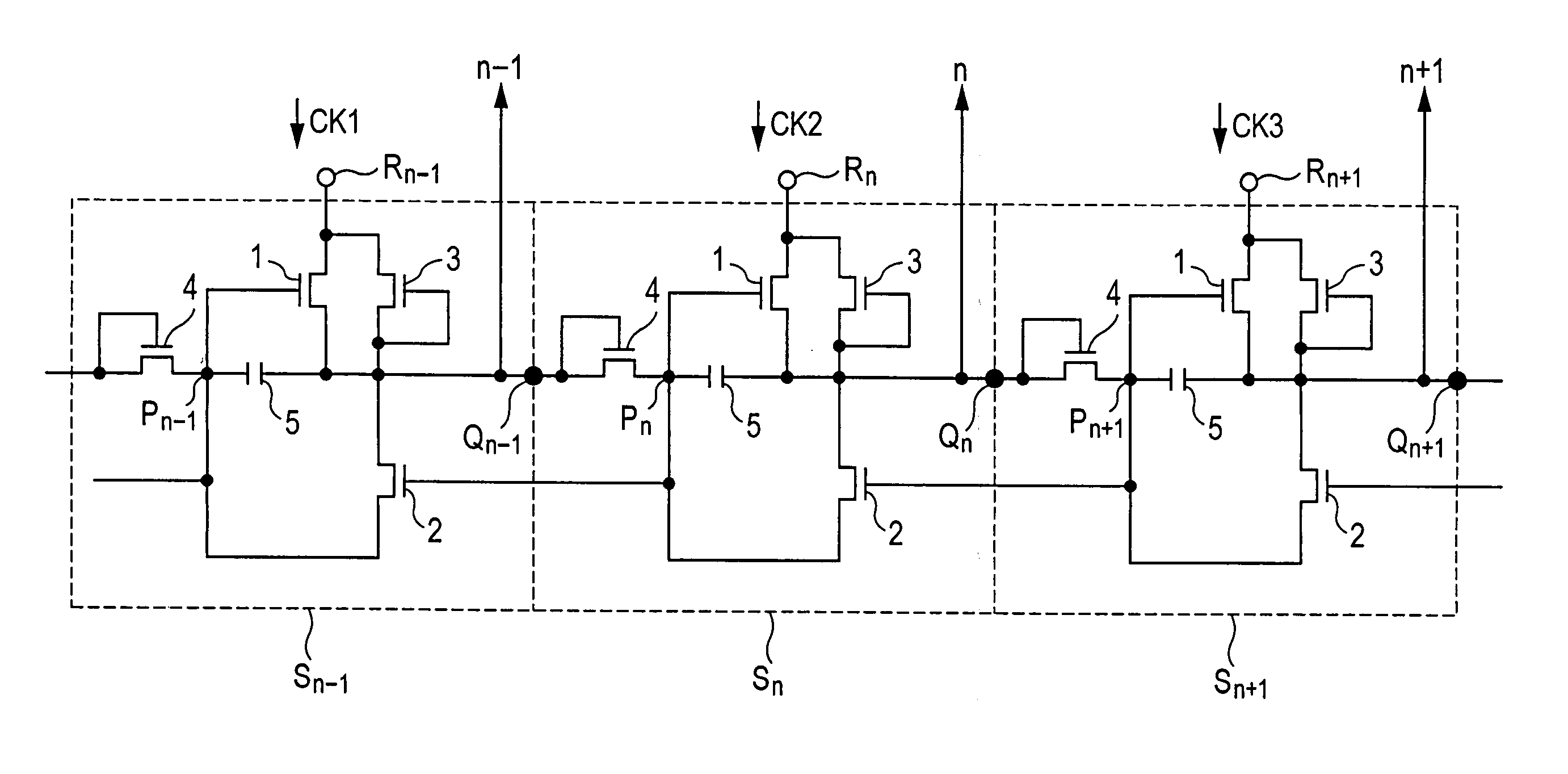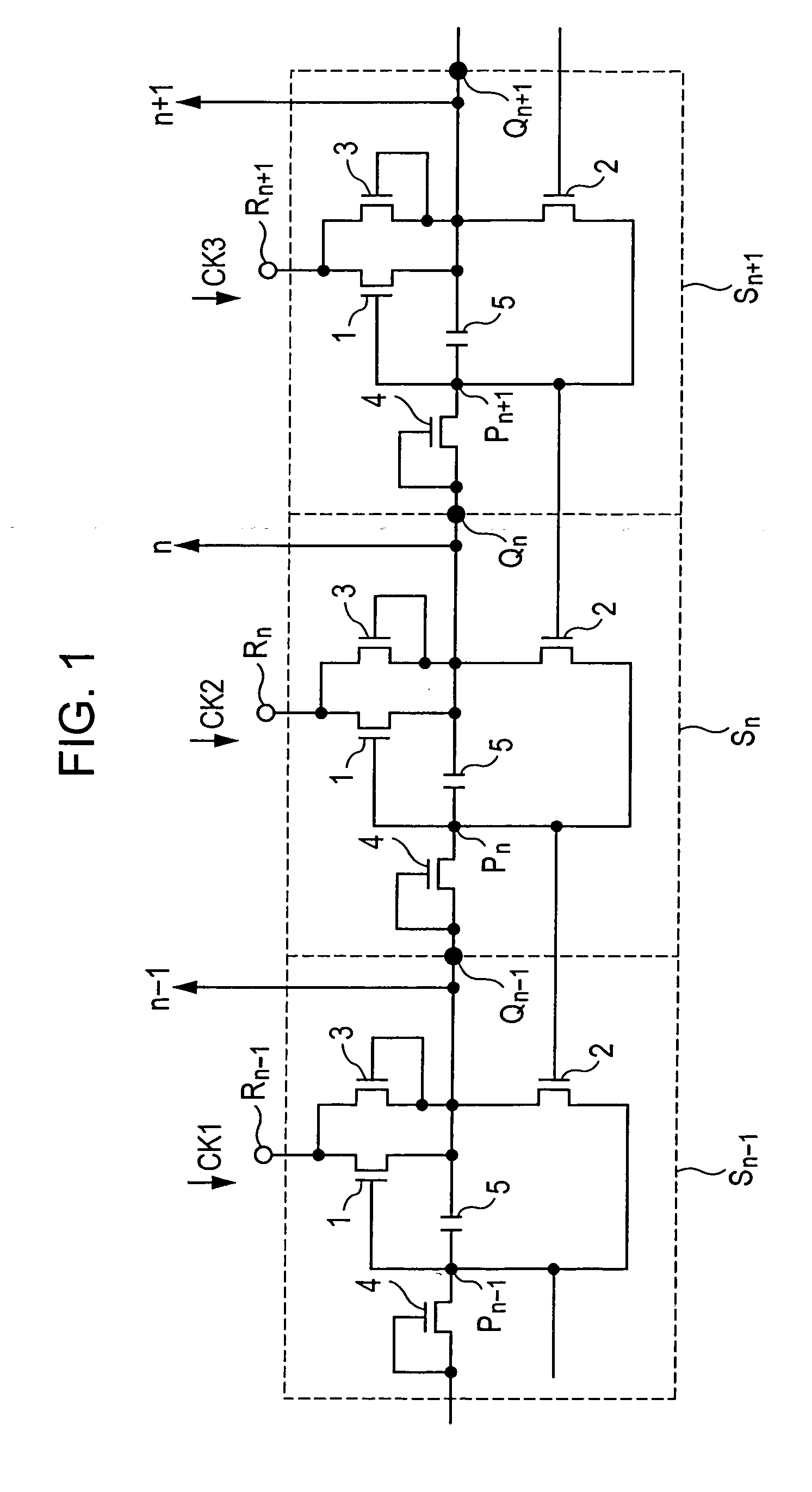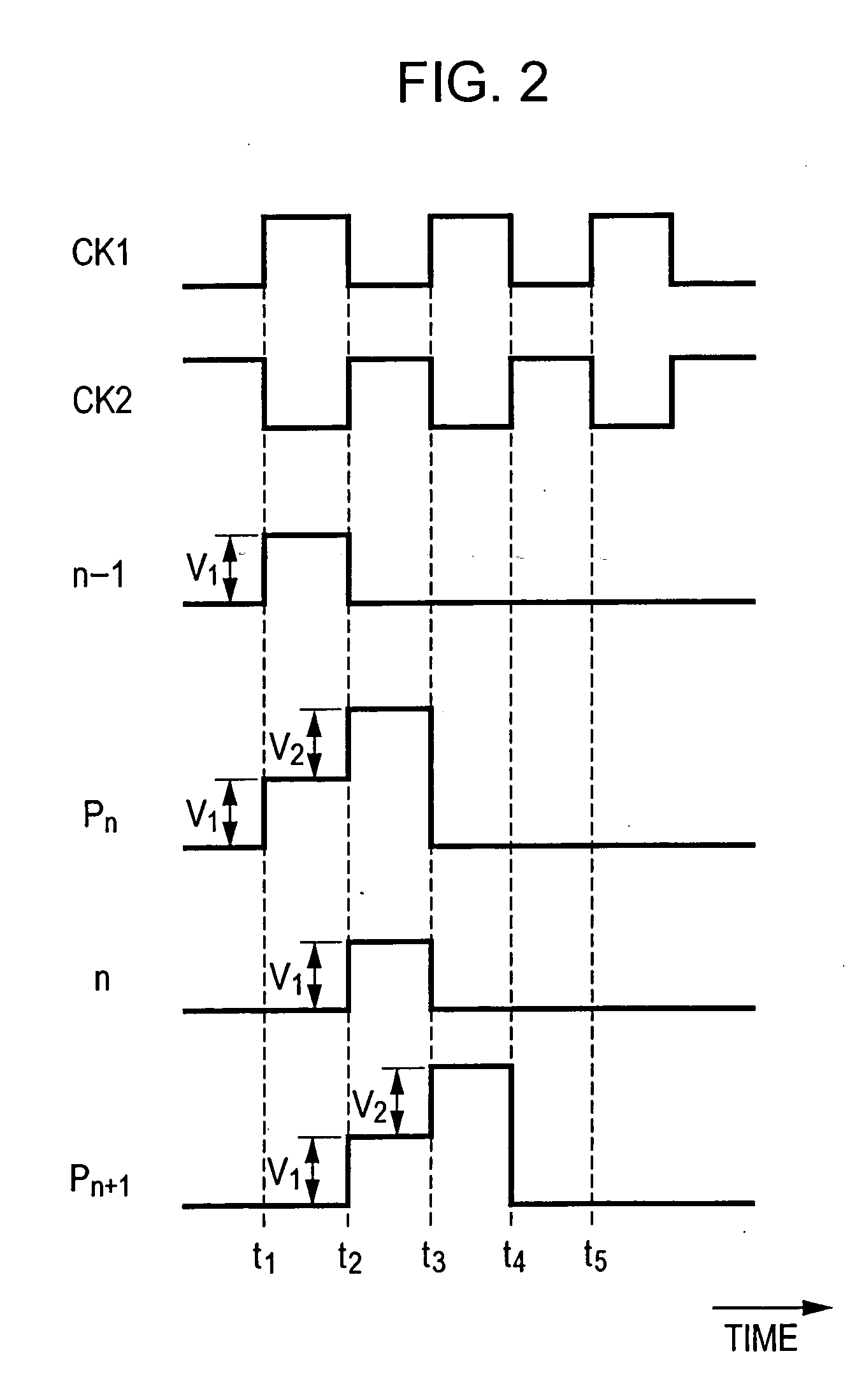Shift register that suppresses operation failure due to transistor threshold variations, and liquid crystal driving circuit including the shift register
a transistor threshold variation and shift register technology, applied in the direction of television systems, counting chain synchronous pulse counters, instruments, etc., can solve the problems of unfavorable repetitive voltage application, complex circuit structure, unstable circuit operation, etc., to reduce the voltage application time, easy to flow, and small area
- Summary
- Abstract
- Description
- Claims
- Application Information
AI Technical Summary
Benefits of technology
Problems solved by technology
Method used
Image
Examples
first embodiment
[0059]FIG. 1 is a circuit diagram of a shift register according to a first embodiment of the present invention, showing three stages n−1, n, and n+1 of the shift register, by way of example.
[0060] These stages have a similar structure, and will be described in the context of the stage n. The stage n includes transistors 1, 2, 3, and 4 and a capacitor 5. The transistors 1, 2, 3, and 4 may be n-channel metal insulator semiconductor (MIS) transistors.
[0061] The transistor 4 is a diode-connected transistor between an input terminal Qn−1 (or an output terminal of an (n−1)-th stage Sn−1) and a first terminal of the capacitor 5 (or a node Pn). The diode formed of the transistor 4 is forward connected to the capacitor 5 from the input terminal Qn−1.
[0062] A source terminal of the transistor 4 is a connected to the first terminal of the capacitor 5, and a drain terminal and a control electrode of the transistor 4 are connected to the input terminal Qn−1.
[0063] The transistor 1 has a drai...
second embodiment
[0094]FIG. 3 is a circuit diagram of a shift register according to a second embodiment of the present invention, showing three stages n−1, n, and n+1 of the shift register, by way of example.
[0095] The shift register according to the second embodiment is different from that according to the first embodiment in that the control electrode of the pull-down transistor 3 and the control electrode of the clamping transistor 2 in the stage Sn are connected to the output node of the transistor 4 in the following stage Sn+1. Similar components to those shown in FIG. 1 are assigned the same reference numerals, and a description thereof is omitted.
[0096] The shift register according to the second embodiment performs a similar operation to that of the shift register according to the first embodiment described with reference to the timing chart shown in FIG. 2, except that it is responsive to three-phase clock signals. FIG. 4 is a timing chart showing the operation of the shift register accord...
third embodiment
[0100]FIG. 5 is a circuit diagram of a shift register according to a third embodiment of the present invention, showing three stages n−1, n, and n+1, of the shift register, by way of example.
[0101] The shift register according to the third embodiment is different from that according to the second embodiment in that the clamping transistor 2 and the pull-down transistor 3 are connected in parallel with respect to the clock terminal and the transistors 2 and 3 discharge the charge accumulated in the connection node and the output terminal to the clock terminal, respectively.
[0102] That is, when the clocks CK1, CK2, and CK3 are phase-shifted, the charge accumulated in the capacitor 5 in a given stage is discharged. When the capacitor 5 in the following stage is charged, a high-level output signal is output.
[0103] The shift register according to the third embodiment performs a similar operation to that according to the second embodiment described with reference to the timing chart sh...
PUM
 Login to View More
Login to View More Abstract
Description
Claims
Application Information
 Login to View More
Login to View More - R&D
- Intellectual Property
- Life Sciences
- Materials
- Tech Scout
- Unparalleled Data Quality
- Higher Quality Content
- 60% Fewer Hallucinations
Browse by: Latest US Patents, China's latest patents, Technical Efficacy Thesaurus, Application Domain, Technology Topic, Popular Technical Reports.
© 2025 PatSnap. All rights reserved.Legal|Privacy policy|Modern Slavery Act Transparency Statement|Sitemap|About US| Contact US: help@patsnap.com



